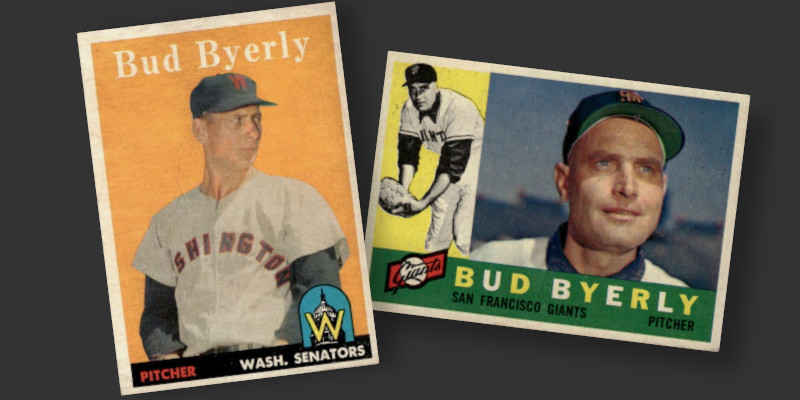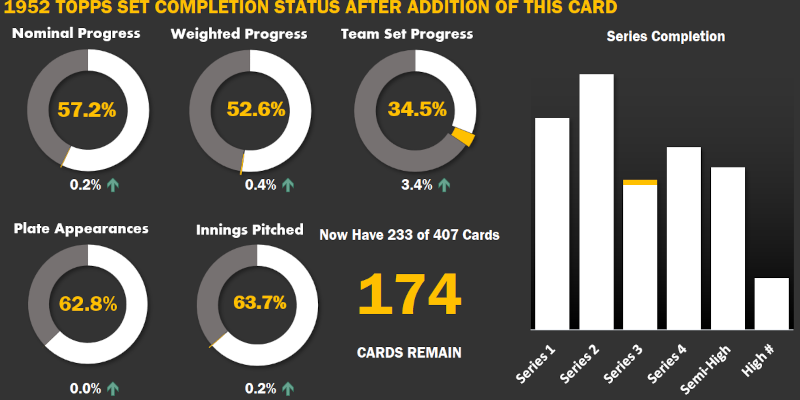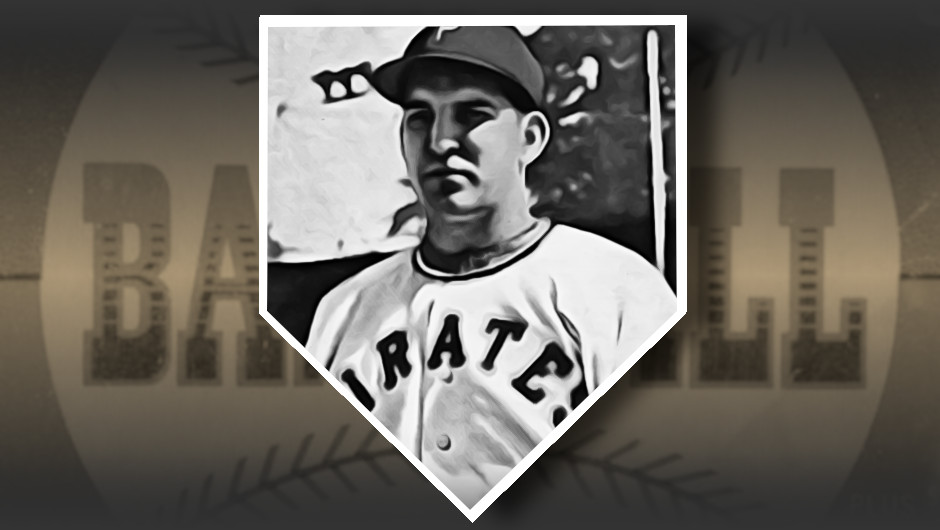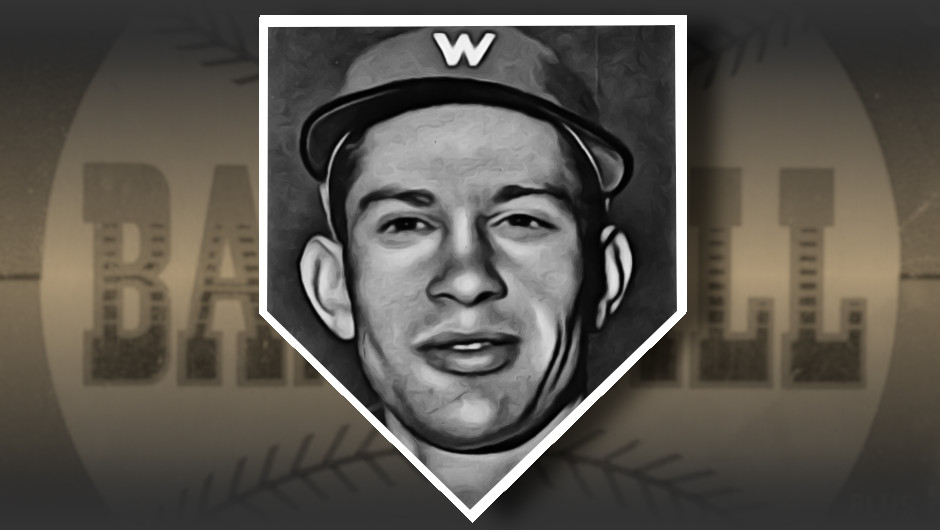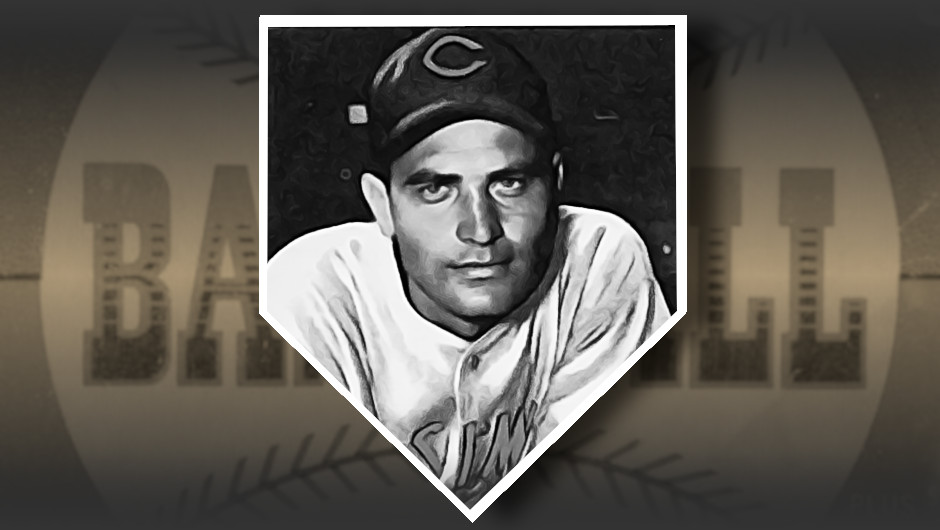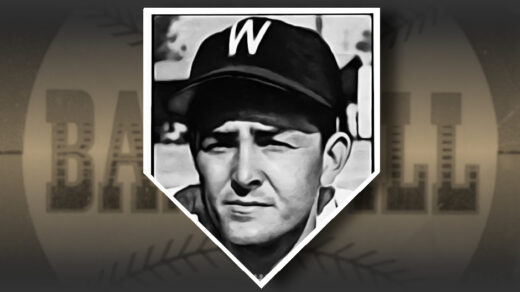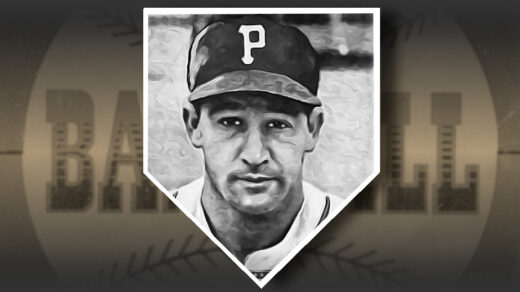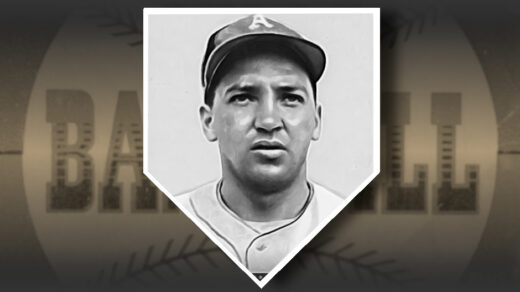Some writers deride relief pitchers as being nothing more than a failed starter. I prefer to think of them as abbreviated pitchers. After all, they are tasked with the same responsibility of getting batters out but given an abbreviated number of innings to get their job done.
Eldred Byerly was one of those seemingly tailor-made for an abbreviated pitching experience. The pitcher who went by the shortened nickname “Bud” specialized in throwing breaking balls and a sinker that induced ground balls (abbreviated fly balls). This led him to inhabit the space near the top of his teams’ ERA leaderboards. Despite that lack of allowed runs, he played a lot of abbreviated seasons with different clubs. His composite major and minor league Baseball Reference statistical table is 37 rows deep despite only suiting up for 5 MLB teams during his career.
Maybe management just didn’t trust him. One of those early teams was the Decatur Commodores, a club with which he shared roster space with fellow ’52 Topps checklist inhabitants Dick Sisler and Clyde Kluttz. The landlocked maritime-themed team was frequently known by the abbreviated moniker “The Commies,” a term that became rather dubious in the Red Scare that was to come in the future. Playing in 100 games for a team called the Reds simply added to the irony.
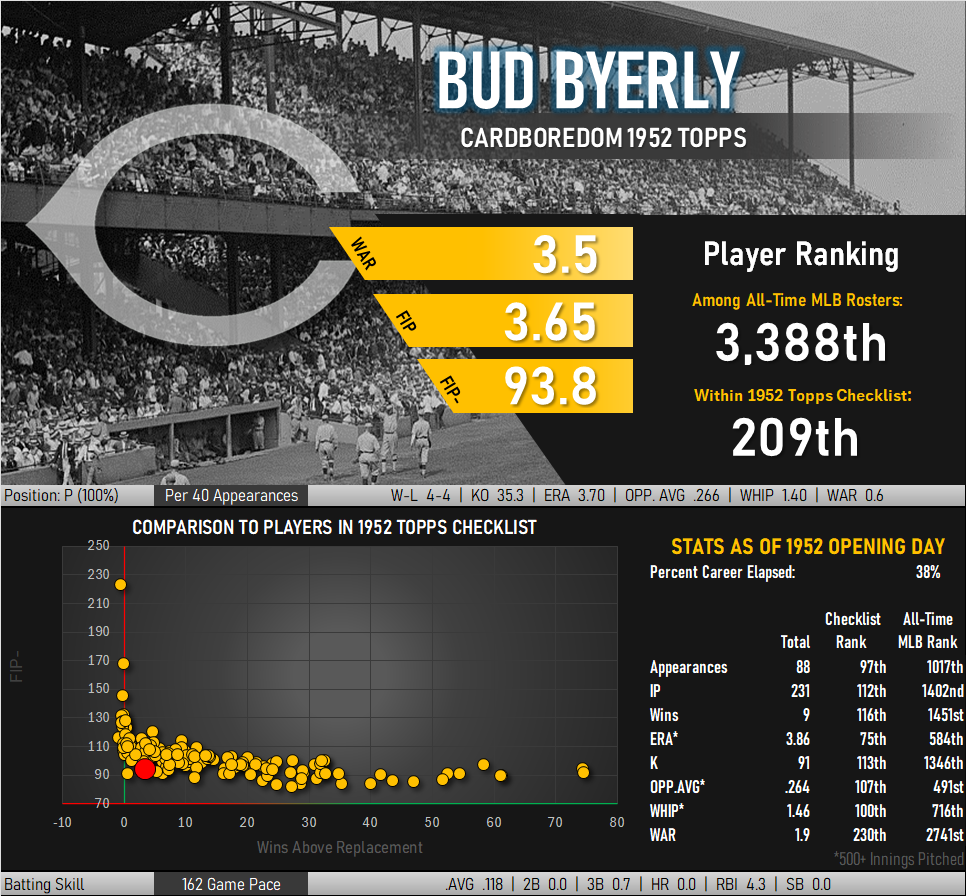
The abbreviations continue on the rookie card produced by Topps for their 1952 set. The third line of biographical text on the back refers to the St. Louis Cardinals as the “Cards” while referencing the year 1944 as “’44.” That’s not even a Cincinnati Reds jersey that he is wearing, but some sort of 1950s flexichrome equivalent to an AI-photo editing shortcut. That’s the impression I get when viewing the nonsense letters superimposed across Byerly’s shirt. The textual content didn’t really matter – Byerly was traded to the Brooklyn Dodgers almost the moment that this card began appearing in packs of gum.
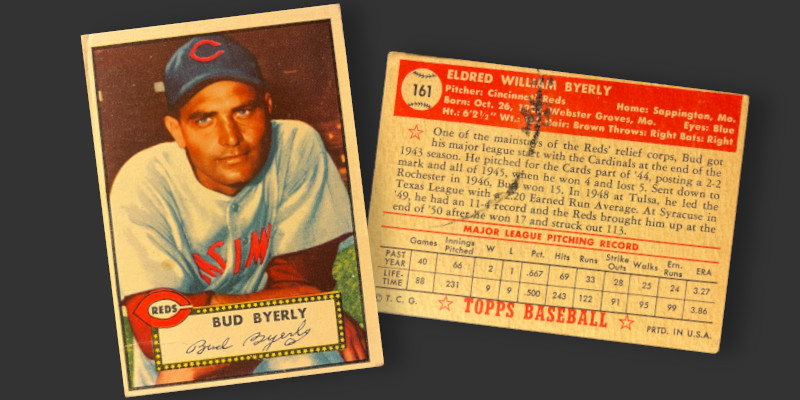
The ’52 card pictured above is the one that resides in my collection. In keeping with the overall condition of my cards the front is fairly clean but the back has some rather distinctive damage. The pattern of dark smudges appear to be the result of a metal can having been set down on the card in a damp environment and allowed to dry, resulting in a transfer of rust to the cardboard surface.
It seems like one card was sufficient to represent Byerly for an extended period. Although the card’s text describes him as “One of the mainstays of the Reds’ relief corps,” he was an effective pitcher for second division clubs but never really a “mainstay” of any particular team. His next cardboard appearance came vicariously through a picture of fellow ‘Senators pitcher Hal Griggs with an incorrect name affixed to the top of his (their?) 1958 card. Byerly finally made it back onto cardboard with 1960 Topps in his final big league season. So ended an 11-season MLB career that was abbreviated into 2½ cards.
